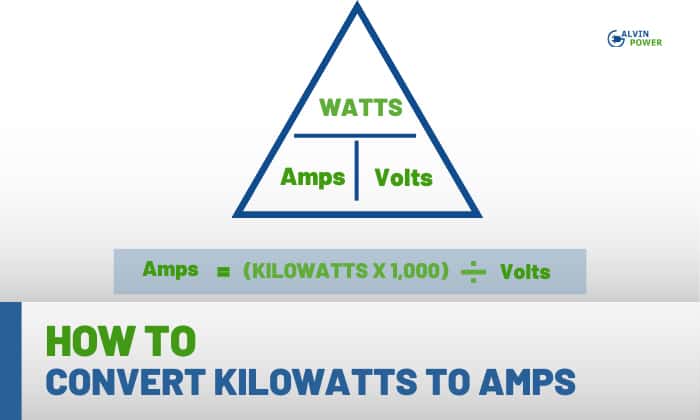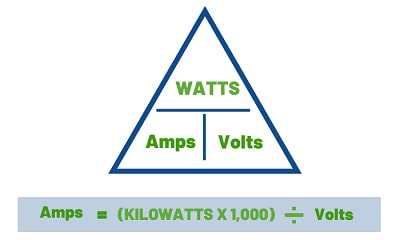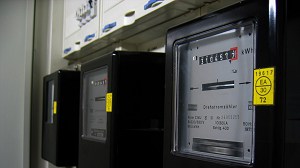Understanding how to convert kilowatts to amps is highly advantageous for individuals working with electrical systems. This knowledge proves invaluable when engaging in circuit design, troubleshooting electrical complications, and ensuring the safe operation of devices.
In this article, we will explore different ways of conversion while considering different formulas applicable to various electrical systems. Let’s begin the conversion below.
Table of Contents
Ways to Convert Kilowatts to Amps
Converting kilowatt to ampere is a common task when dealing with electrical power. Here are several methods you can use for it.
1. Manual Calculation
To manually convert kW to amps, it is important to use the appropriate formulas based on the type of circuit you are working with. Here, we provide the correct equations and examples to guide you through the manual conversion process.
- DC
For DC (Direct Current) circuits, the formula is: 1000 x kW / Volts = Amps. For instance, if you have a 1-kilowatt solar system in a 120V DC circuit, the computation would be:
\[ 1000 \times 1 \text{ kW} \div 120 \text{V} = 8.33 \text{ amps} \]
- AC Single-Phase
AC (Alternating Current) circuits have varying power efficiency, which is expressed as the power factor (PF). Thus, the equation becomes
\[ 1000 \times \text{kW} \div (\text{Volts} \times \text{PF}) = \text{Amps} \]
For example, if you have a unit with a power rating of 1.5 kilowatts and a power factor of 0.8 in a 240 volts AC single-phase circuit, the computation would be
\[ 1000 \times 1.5 \text{ kW} \div (240 \text{V} \times 0.8) = 7.81 \text{ amps} \]
Three-phase line-to-line and line-to-neutral voltage connections also differ in terms of the equation used. Here is what you can use to convert kilowatts to amperes in such a system.
- AC Three-Phase Line-to-Line Voltage
In three phase systems, the conversion equation for line-to-line voltage is:
\[ \frac{1000 \times \text{kW}}{\sqrt{3} \times V \times PF} = \text{Amps} \]
Suppose you have 10 kilowatts with a power factor of 0.8 and a line-to-line voltage of 208v, the computation would be:
\[ \frac{1000 \times 10 \text{ kW}}{1.73 \times 208\text{V} \times 0.8} = 34.69 \text{ amps} \]
- AC Three-Phase Line-to-Neutral Voltage
The equation for three-phase line-to-neutral electrical systems is:
\[ \frac{1000 \times \text{kW}}{3 \times V \times PF} = \text{Amps} \]
For instance, if you have a 75 kilowatts unit with a power factor of 0.8 in a 480v three-phase line-to-neutral system, the computation would be
\[ \frac{1000 \times 75 \text{ kW}}{3 \times 480\text{V} \times 0.8} = 65.10 \text{ amps} \]
Here is a short conversion chart you can refer to.
| Voltage | kW | DC circuit amperage | AC single-phase (0.8 PF) amperage | AC three-phase line-to-line
(0.8 PF) amperage
|
AC three-phase line-to-neutral
(0.8 PF) amperage
|
| 110 | 1 | 9.1 | |||
| 110 | 2 | 18.1 | |||
| 220 | 1 | 4.55 | 5.6 | 3.3 | 1.9 |
| 220 | 2 | 9.1 | 11.3 | 6.6 | 3.8 |
2. Using Amperage Calculator
These calculators were created specifically to make converting between kilowatts and amps easy and accurate. You may quickly obtain the total current draw by taking simple steps.
When working with a DC connection, enter the power rating in kilowatts and the associated voltage rating. The total current draw will then be displayed instantly on the calculator’s screen.
With regard to AC electrical systems, you have to provide the unit power rating, the electrical phases, the voltage rating, and the device’s power efficiency. When these values have been entered, the calculator will also show the result on the screen.
Remember, the current value of a device resulting from your calculations can be a reference to help you design a circuit that can hold this power rating. This way, you can avoid an insufficient power supply that causes malfunctioning of devices and overloading of circuits.
Conclusion
Knowing how to convert kilowatts to amps is essential to determining how much current your devices can use. Therefore, it’s useful to remember different formulas and calculations for various electrical systems.
Such knowledge will help ensure the safety of your home or business

I am Edwin Jones, in charge of designing content for Galvinpower. I aspire to use my experiences in marketing to create reliable and necessary information to help our readers. It has been fun to work with Andrew and apply his incredible knowledge to our content.



